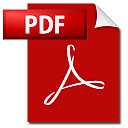[Update] Yes you can make any blog use a master module, see this nearly incomprehensible help page. The short explanation is that you can go to every blog entry template and change the page to call the footer module like this:
<$mt:Include module="Banner Footer" blog_id="1"$>
instead of the local footer module call:
<$mt:Include module="Banner Footer"$>
Alternatively you could just replace the local banner footer module code with the same code:
<$mt:Include module="Banner Footer" blog_id="1"$>
That way the master footer will appear in the entry, the index and the archive and the category pages.
Making
a uniform header is more problematical. The incomprehensible help page
points out your master header code would need if-than statements so each
blog has the proper name, etc, I am not sure all this complexity is
preferable to having 9 blog header templates you just call up and modify
by hand should you want to make a common change to all of them.
The
incomprehensible help page also explains how I make the master table of
contents update when any blog gets added to. You go to the
"tools>>plugins>>Multiblog>>settings" and you can set
up the triggers that make your master table of contents update when you
post any new blog entry.
| Print, video, sounds |








